TEC5 Charles H. Tyler
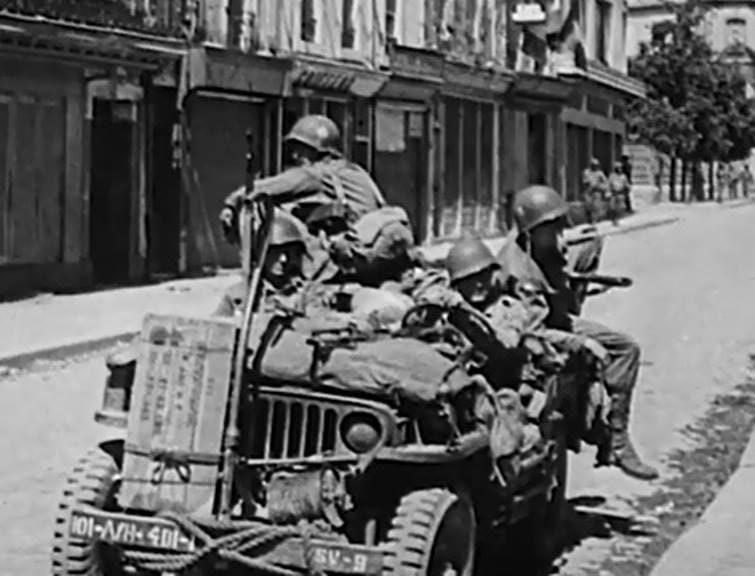
Technician 5th Grade (TEC 5) Charles H. Tyler of HQ Company, 1st Battalion, 401st Glider Infantry Regiment (GIR), 101st Airborne Division, was born in Columbus, Franklin County, Ohio, to Cyril J. and Catherine T. (Moone) Tyler on April 7, 1918.
Sadly his father passed away on January 4, 1936 at the age of 44. Charles had four siblings - an older brother named Richard, who served in the U.S. Navy during WWII, as well as three younger sisters, Mary C., Dorothy A., and Ruth E.
Charles attended West High School on South Powell Avenue in Columbus, which opened its doors in 1929. After graduating high school, he worked as an electrician until he enlisted in the U.S. Army at Camp Perry on the shore of Lake Erie on March 26th, 1942.
Corporal* Tyler was assigned to the 401st GIR, and after accomplishing his stateside training, he would sail from New York towards Europe aboard the HMS Strathnaver on September 4, 1943. This would become an eventful trip as the ship ran into problems and was forced to leave its convoy.
After a repair job in Newfoundland, the HMS Strathnaver resumed its journey on September 26th, but this trip would also be cut short when it hit a rock while navigating through the harbor. The next day, a second attempt was made to sail again, but the ship was still taking in water, forcing it to return to Saint John's for additional repairs.
Another ship, the SS John Ericsson would pick up the stranded soldiers, but since it was on a return trip from England, it first had to sail to Halifax, Nova Scotia, to resupply. Finally on October 18, 1944, the SS John Ericsson docked at Liverpool. This meant it took 44 days for the military passengers to cross the Atlantic, whereas the trip usually took about ten days!
Corporal Tyler would eventually take part in the D-Day invasion, landing at Utah Beach. He would also be involved in subsequent operations with the reconnaissance platoon of 1st Battalion, 401st GIR, in Normandy, before returning to England in July for a seven day furlough.
Charles would then take part in the glider insertion into the Netherlands for Operation Market Garden. And he was lucky compared to other men from the recon platoon.
During the flight from England towards Holland, he and the other men in his glider spotted a crew who had ditched their aircraft in the English Channel. As they watched a British rescue ship speeding toward the downed glider, four men from the platoon drowned, including Tec 5 Alonza Whitfield, who had earned a Silver Star Medal in Normandy.
While Charles survived the harsh combat experiences in the Netherlands, his good fortune would run out in Bastogne.
He and his men left Mourmelon, France, on the night of December 18, 1944. Driving all night with only black-out lights, they arrived at Bastogne the next morning. The crew rested briefly in a hayloft before being given the mission to make contact with the Germans on one of the highways leading into the town. All the intel stated the enemy was two to three miles out but moving fast.
Their jeep included a crew of four men: TEC5 Charles Tyler as the driver, PFC Tony Benedetto, radio operator, in the front passenger seat, with PFC John Moore and PFC Rudy Brabec manning the Browning Automatic Rifle (BAR) in the back seat.
In a letter to George Koskimaki, PFC Moore would describe in part what happened;
“We made contact only five hundred yards down a highway out of Bastogne. There were two pieces of high ground. German machine-guns mounted on each. They let us come in and then opened fire. Tyler and Benedetto were killed and Brabec and I were wounded. I managed to crawl back to a medic and a shot of morphine, then on to an aid station for a number of days. The Germans were ignoring the Code of War and ambulances were being shelled. However, I managed to reach a hospital in France prior to [the] New Year of 1945.”
PFC Benedetto would die of his wounds later that day, but the description given by John Moore of the ensuing battle was rather brief, as can be read in the posthumously awarded Silver Star Medal of TEC 5 Charles Tyler.
“On 19 December 1944, during an engagement with the enemy in the vicinity of Bastogne, Belgium, he was driving the lead quarter-ton truck of the foremost element of the [101st Airborne] Division in a reconnaissance preceding an attack. Suddenly subjected to intense enemy fire from the flanks, the machine gunner in his vehicle was wounded. TEC 5 Tyler immediately manned the machine-gun and delivered effective fire into the attacking enemy forces.
Enemy tracer bullets set fire to the truck, forcing him to abandon the gun temporarily. TEC 5 Tyler extinguished the flames and again fired the machine-gun at the enemy until he was mortally wounded. His conspicuous courage in the face of enemy fire, aggressive determination, and devotion to duty resulted in the destruction of one enemy gun and enabled his comrades to organize to meet the initial impact of the enemy’s westward drive. His actions were in accordance with the highest standards of the military service.”
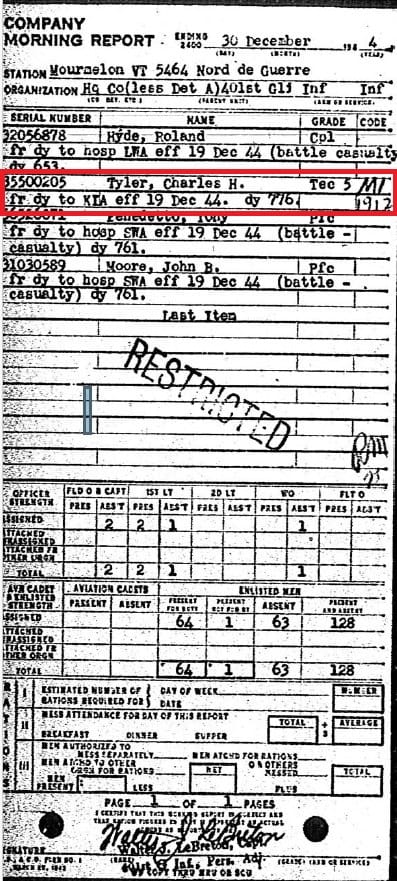
Another Screaming Eagle had soared to the ultimate height. 🦅
TEC5 Charles H. Tyler was first buried in Europe, and would be reburied at Mount Calvary Cemetery, Columbus, Ohio, in December 1948. May he rest in peace.
Happy 106th Birthday in Heaven, Charles.
Lest we forget! 🇺🇸
Note: Technician Fifth Grade (Tech 5) was designated as the rank Corporal in the United States Army on January 26th, 1942. The insignia included two chevrons above the letter "T". Service members would address a Tec 5 as Corporal.
Sources
- Find a Grave, Charles H. Tyler
- Columbus Dispatch; Tuesday, January 16, 1945
- Columbus Dispatch; Wednesday, December 1, 1948
- SSM citation (Courtesy of Jim Bigley)
- George Koskimaki files of the 401st GIR (Courtesy of Felipe Jirkal)
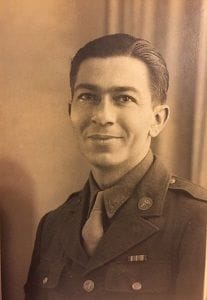
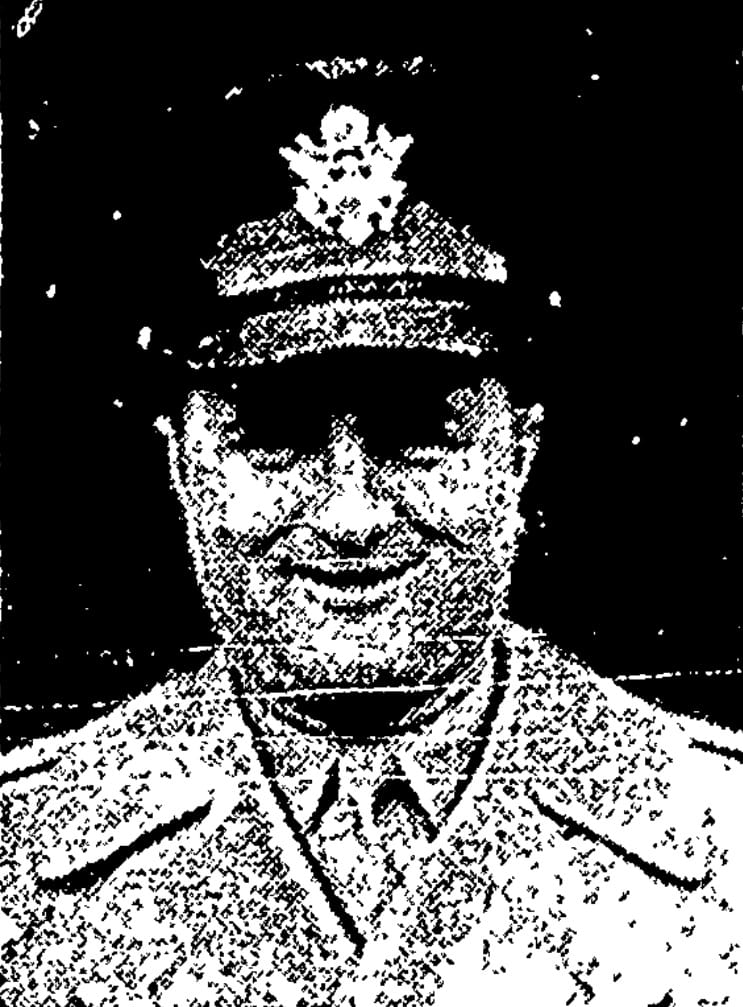
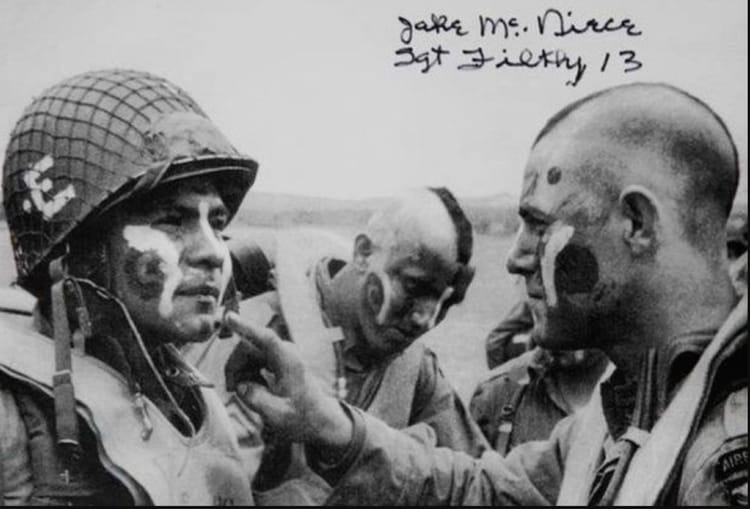
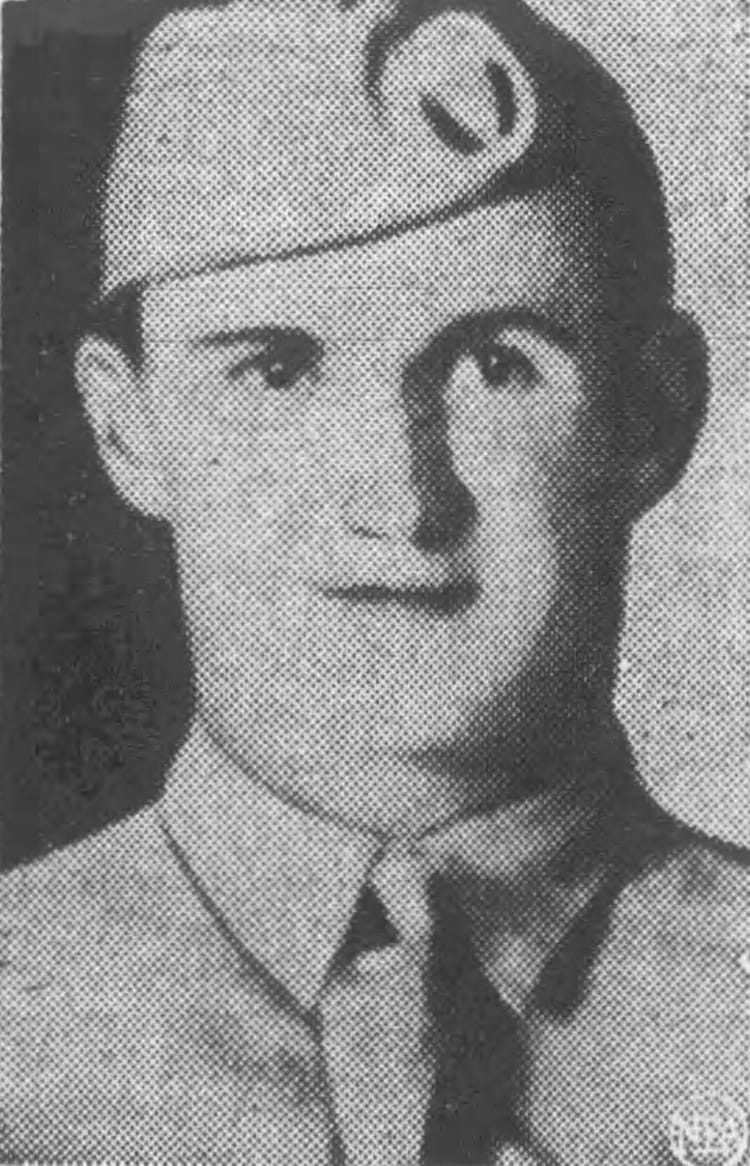
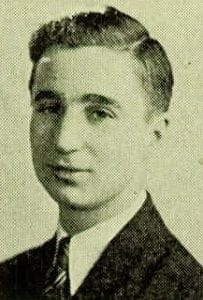
Member discussion